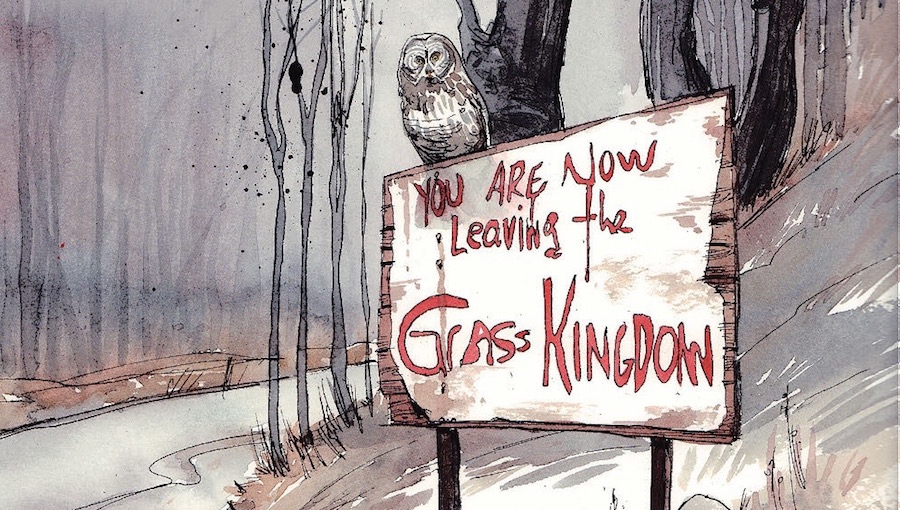In its final issue, I finally found my way, wholly and completely, into Grass Kings. Matt Kindt and Tyler Jenkins avoid every possible cliché ending that could have occurred based on the final panels from the last issue. They undercut every expectation, they stripped away all of the tangential plots, and they wnet straight for the gut…and the heart.
What started off as a picture history of hundreds of years of violence on a specific plot of land became – over the past year – a zig-zagging storyline of tension between a small, Midwestern police department and a nearby, self-made utopia called the Grass Kingdom in which the search for a serial killer was used as a chess piece to instigate a small-scale war.
Kindt and Jenkins’ story went from to murder mystery, to action story, to small, personal dramas about the people in the Grass Kingdom. When I break it down like that, it feels like it should all piece together pretty easily, but, at times, it became dizzying. It was hard to know where the central emotional throughline was with all of the hop-scotching around. Some subplots felt like they drifted away, having served lesser of a purpose—red herrings they call them, dead ends for the reader. I never got to know a lot of the characters as much as I would have liked, especially when it came to the timing of certain story beats. With all of that in mind, for the past month, the final issue of Grass Kings has been on my mind.
I sat down today, I put in my earbuds, and I turned on the score to A Simple Plan by Danny Elfman. I saw the synchronicity between the two stories and felt the score to be apt. As I started to read, it took a moment for me to get my bearings. We weren’t jumping in from where we left off, and as I realized what was happening, where I was, what I was being exposed to, my chest started to tighten, and all of the tangents in the storyline came crashing together and my heart broke. The creators don’t just tie all of the threads together, they tie the experiences of every character that exists in this world together and lay it at your feet in the most palpable of ways, and I cried. I cried for a few minutes after reading. This world suddenly became real to me in a way that it hadn’t completely before. Yeah, there were moments in which I proclaimed, “Brilliant!”, along the way, but I was not expecting this. I was not expecting to have an entire town’s tragedy become my tragedy. One man’s tragedy, in particular.
Kindt and Jenkins were 15 steps ahead of me, and I’m glad I stuck around.
The artwork in this story and the visual storytelling in this issue in particular (and others)… over the course of this book, I have become a true fan of Tyler Jenkins’ work. There are images that will stick with me – images that teach, that show you how you can affect a reader emotionally simply through implication. Jim Campbell on lettering used his space like few other letterers that I’ve seen do, allowing the placement of the words to become just as important as the words themselves. Hillary Jenkins on colors brought the Midwest to life in ways that I remember as a kid. You can almost smell the fresh air and, at the same time, the death and decay. The work between these three visual artists I can only describe as poetic.
And major kudos to Eric Harburn for trusting and helping to guide this complex vision to the page.
When the collections come out, I can’t wait to sit down and read this again. I have a feeling that every time I do, I’ll cull something else from it.
Creative Team: Matt Kindt (story), Tyler Jenkins (art), Hilary Jenkins (colors), Jim Campbell (letters), Eric Harburn
Publisher: BOOM! Studios
Click here to purchase.

